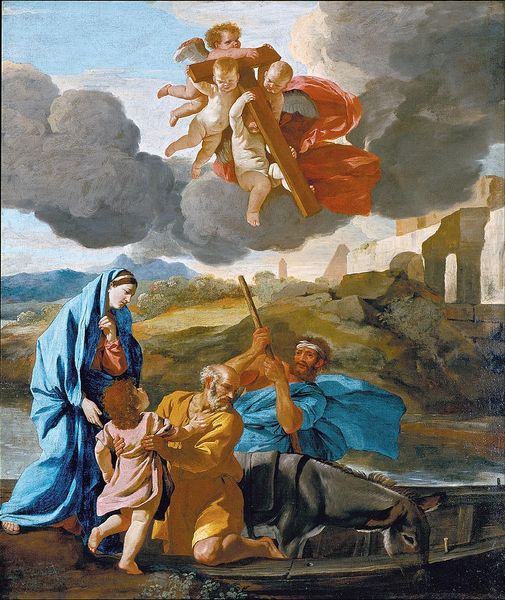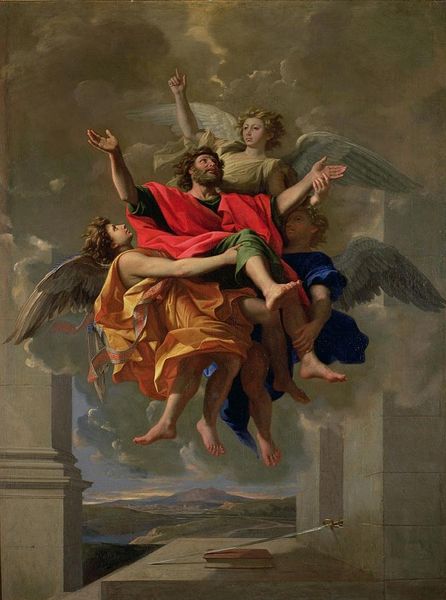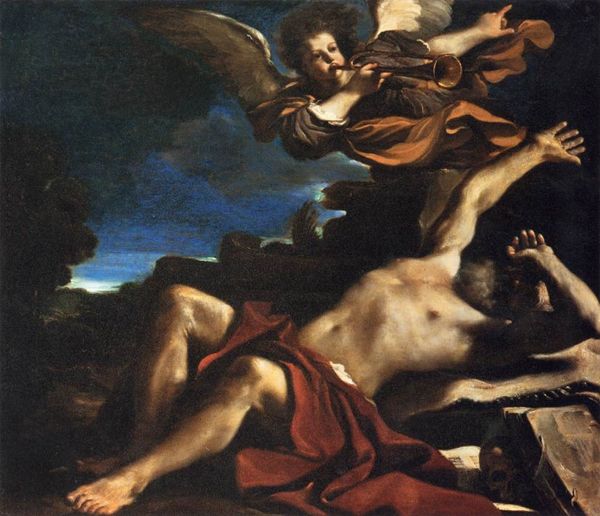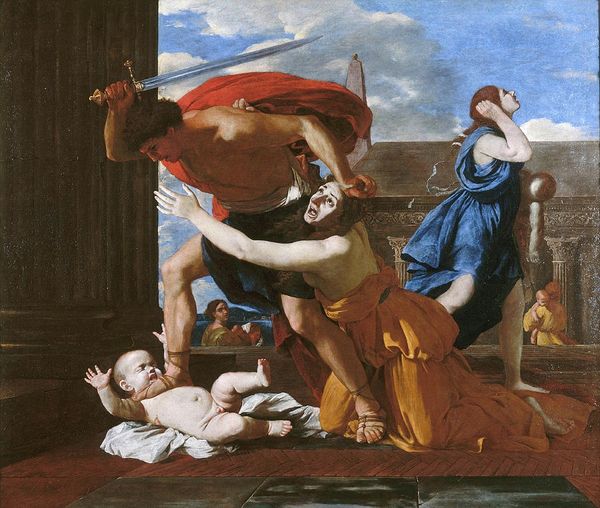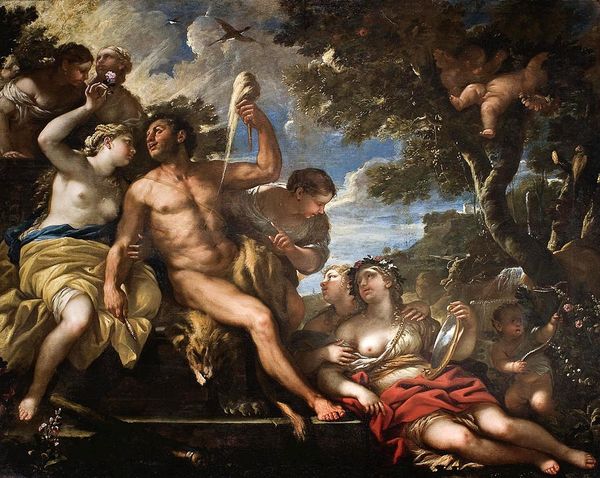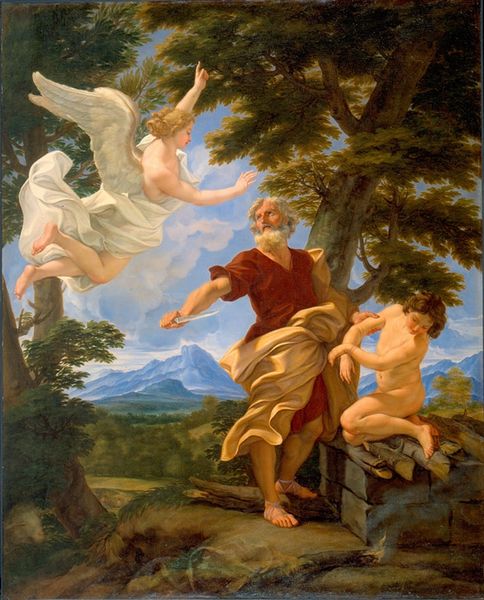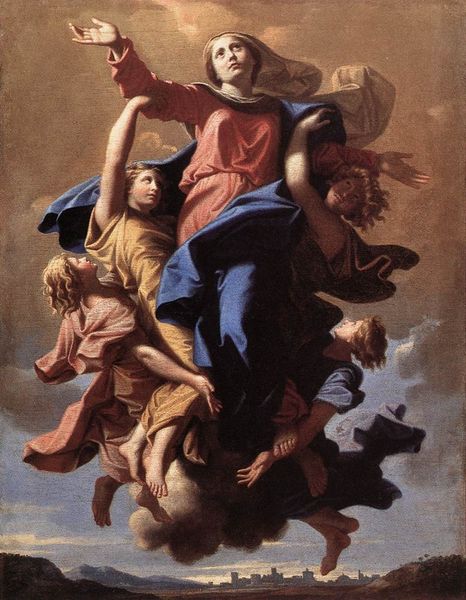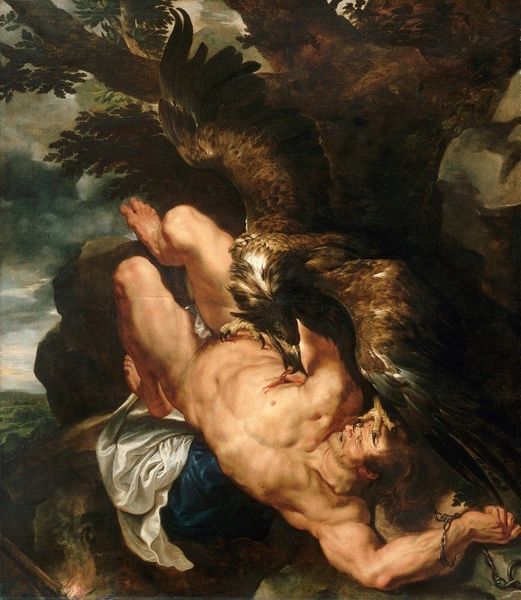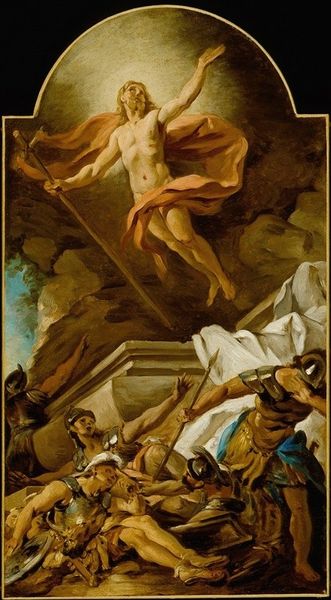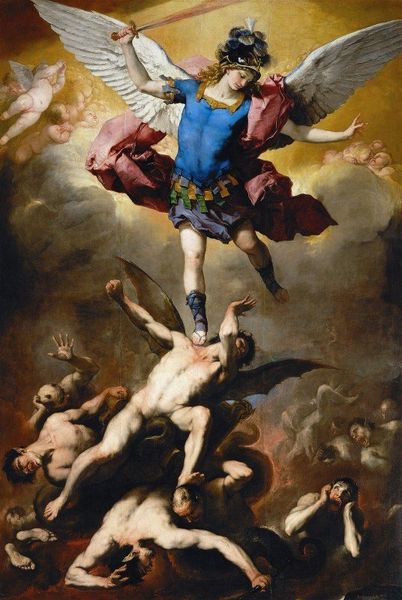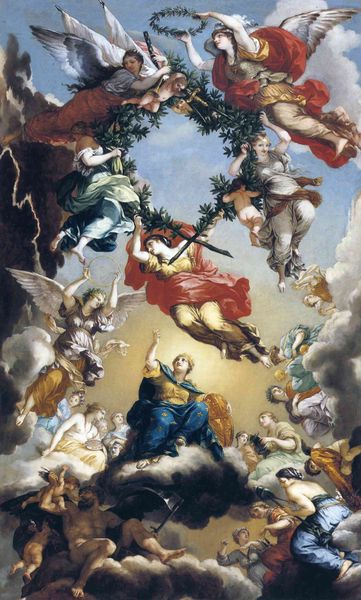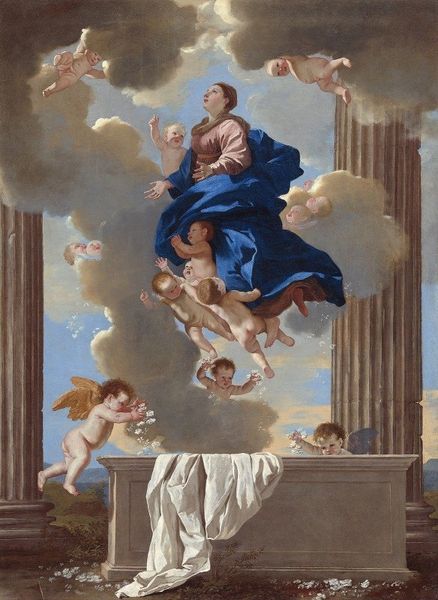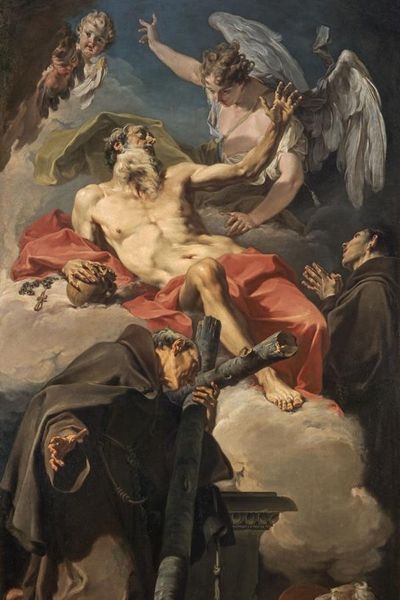
painting, oil-paint
#
venetian-painting
#
allegory
#
painting
#
oil-paint
#
landscape
#
figuration
#
surrealism
#
christianity
#
mythology
#
history-painting
#
italian-renaissance
#
angel
#
christ
Dimensions: 328 x 285 cm
Copyright: Public domain
Curator: This is Titian’s *Sacrifice of Isaac* from 1544, rendered in oil paint. The scene feels incredibly fraught. What strikes you initially about its presentation? Editor: It’s…intense. Abraham is positioned front and center, his body so muscular and commanding. The dramatic lighting focuses our attention on his physical strength as he's about to commit the act. But I wonder, from a materialist point of view, how does Titian’s rendering amplify the meaning here? Curator: Note how the musculature isn't just a sign of Abraham's age, but also his labor and participation in that material world. How does the angel's intervention alter your interpretation? It doesn’t negate Abraham's action or faith; it's still tied to labor, faith and sacrifice in service of that. The laboring bodies in conjunction with Titian's methods are used in service of religion and political patronage. The angel isn't a disembodied divine command but enters that scene through force and exertion too! What materials are actually used in the process of the image's production to reinforce Abraham's commitment? Editor: It seems Abraham's garments mirror the earth, but they seem also designed for labour rather than decoration: Simple and rugged. Titian also seems more preoccupied with expressing the moment rather than using hyper-realistic depiction of a person in action like others, I mean, there are surreal touches as it has been flagged… Curator: Yes, precisely. Consider too how Venetian colorism itself—the act of building up pigment, layering, blending, Titian’s distinctive method—mimics themes within the piece itself. Production methods create a world that feels true in conveying the tension, as Titian is concerned less about representing real physical labor than evoking a dramatic religious moment in all its terror. What do you make of that now? Editor: So, it’s not only what is depicted but how Titian depicts it; the work itself embodies effort, even struggle? I see how that reinforces a materialist interpretation. Curator: Exactly. And to examine the relationship of power expressed through method—to think beyond idealised forms into how that labor expresses political meanings. Editor: That opens up a whole new perspective, and a better appreciation of Titian's genius! I appreciate your approach. Curator: Indeed, it reveals much about the intersection of material realities, social order and spiritual experience in Titian's art.
Comments
No comments
Be the first to comment and join the conversation on the ultimate creative platform.

